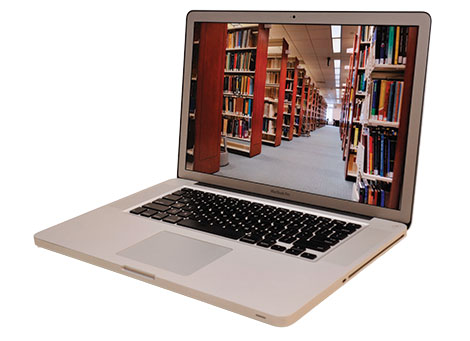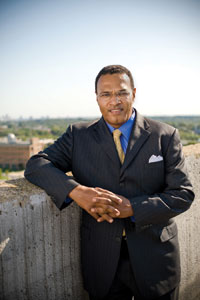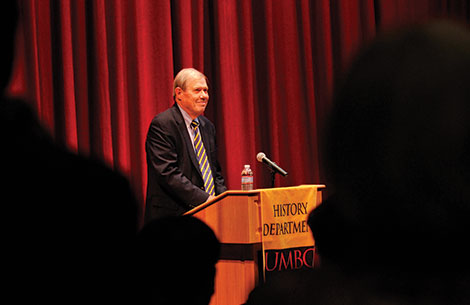Teaching students how to write more clearly and powerfully in introductory writing classes is at the heart of the university’s mission. But technology is transforming the task, says James Polchin ’89, political science and English, who teaches writing and founded a website – WritingInPublic.com – that celebrates the contemporary essay. Polchin has taught in the Princeton Writing Program, the New School for Social Research, and is currently on the faculty of the Global Liberal Studies Program at New York University.
by James Polchin ’89
It has been nearly 30 years since I walked into a small, green-walled classroom in what is now the Robert and Jane Meyerhoff Chemistry Building for my first session of English composition. The course included the usual curriculum of academic writing exercises and ended with a large research essay. For my final essay, I wrote about the 19th century British painter J.M.W. Turner’s influence on the French Impressionists. Along with my classmates, I created a stack of note cards scribbled with fragments of quotes copied from books and journals, organized the note cards, and then wrote outlines. Some of my peers had those early, boxy versions of personal computers, but I drafted my essay by hand and then typed it out, footnotes carefully measured, on an electric typewriter. The Internet was still a sci-fi fantasy several years down the road.
Just about the time that I was tackling Turner on my typewriter, a professor of English at the University of Pittsburgh named David Bartholomae published an influential article entitled “Inventing the University.” It began with some provocative first lines: “Every time a student sits down to write for us, he has to invent the university for the occasion…. He has to learn to speak our language, to speak as we do, to try on the peculiar ways of knowing, selecting, evaluating, reporting, concluding, and arguing that defines the discourse of our community.”
Bartholomae argued that each writing assignment did more than ask students to turn thinking into sentences and paragraphs, but rather it asked students to turn thinking into forms of academic discourse – a term that would later become common usage in my graduate school years in the 1990s, when exposure to Bartholomae’s essay helped shape my training and work as a future instructor of writing.
My own UMBC English Composition class had a focus on “inventing the university,” presenting us with isolated exercises in academic writing. Very few of my classmates wrote much beyond the work assigned to them. For many of us, writing seemed divided into either creative efforts (personal and often private) or class assignments that didn’t venture beyond the professor’s tote bag.
Teaching writing today is much different than in 1985. So what’s changed? Today, my students have access to a vast global archive of facts and figures both common and strange. They have more evidence for writing an essay than at any other time in history, and certainly more than I did in the bowels of the Albin O. Kuhn library, searching for ideas about J.M.W. Turner. My more sophisticated first-year students come into the writing class with their own blogs or online sites. Many share writing across borders in ways that I could have never conceived in English Composition.
In our digital world, where writing is increasingly more public than private, more social than solely anchored in classroom assignments or private journals, the teaching of writing, like most things today, is more complex. I am often wondering what are we asking students to invent when we ask them to write at the university today?
Recently I gave my first-year students an essay by cultural historian Neal Gabler entitled “The Elusive Big Idea.” Gabler argues that we are in an age where the concept of the big idea, such as Freud’s unconscious or Betty Friedan’s the “feminine mystique” have become passé. Information is more important than big ideas. “In the past,” Gabler explains, “we collected information not simply to know things. That was only the beginning. We also collected information to convert it into something larger than facts and ultimately more useful – into ideas that made sense of the information.”
I was surprised to find many of my students agreed with Gabler, and even believe that we have found all the great ideas already. “We are simply building on the big ideas from the past,” one student claimed. This claim is the echo of the information culture, where facts and sound bites and fragments of knowledge stand for knowledge itself. It is a bit like having all those note cards with quotes and comments and ideas but not actually turning them into the essay.
If English Composition taught us the rigors of academic research, today’s writing classes have to engage with the very fragmented process of writing and thinking, a vast network of facts and figures and frauds. If big ideas are difficult to find today, the work of reflecting on evidence and ideas is even harder to grasp. Reflection requires a distance, a stepping back from all the information, getting out of the net.
For years I have been trying to recover the essay from mere assignment, or a tool used only to invent the university. I have wished to give it a more active and engaged place. For my students, conversation, rather than pure self-contained argument, is crucial and necessary to the kind of writing they need to invent. While many of us may have been taught how to form arguments, our students today need to find ways of becoming interlocutors. They need to be able to gather facts, evaluate evidence, come up with ideas. But they also need to see how their ideas are in a larger conversation. They need to see that forming ideas is not the end of the process but a step along the way.
Those of us who teach need to confront this reality. In her recent book, Planned Obsolescence, Kathleen Fitzpatrick, shows how digital technologies are changing the way we think about university scholarship. In assessing the increasing demands of scholarly output placed on university professors, Fitzpatrick claims that “writing has been reduced from a process of discovery, exploration, and communication to a system for the assembly of more and more new products.” Writing as product offers, in Fitzpatrick’s view, a disincentive to the dynamic nature of scholarly work. She writes about how blogging, for example, can shift scholarly work toward a more public and more collaborative, international process.
Our digital lives are only just beginning to reshape our writing lives, and these changes are becoming more and more central to my work in the classroom. Last year, The New York Times published an article that wondered if the blog was replacing the term paper. The conclusion was “not exactly” but the article pointed to a Stanford University study on the use of new media in writing education. “The students love writing for an audience, engaging with it,” the article noted in summarizing the study. “They feel as if they’re actually producing something personally rewarding and valuable, whereas when they write a term paper, they feel as if they do so only to produce a grade.”
Shifting perspective from grade to audience, from argument to interlocution and inquiry allows for new approaches to writing so crucial in our digital age. In many respects, it allows college students to invent the university in a whole new way. While I can get nostalgic for English Composition, much of it now sadly feels as old as that electric typewriter.
Tags: Summer 2013





